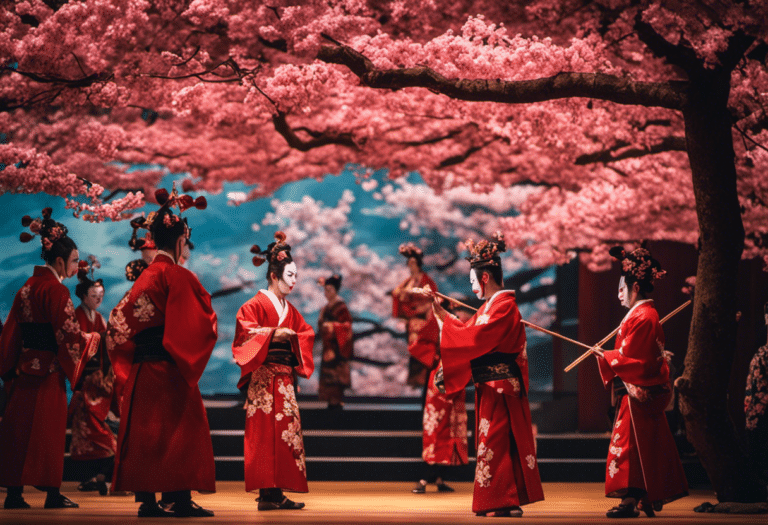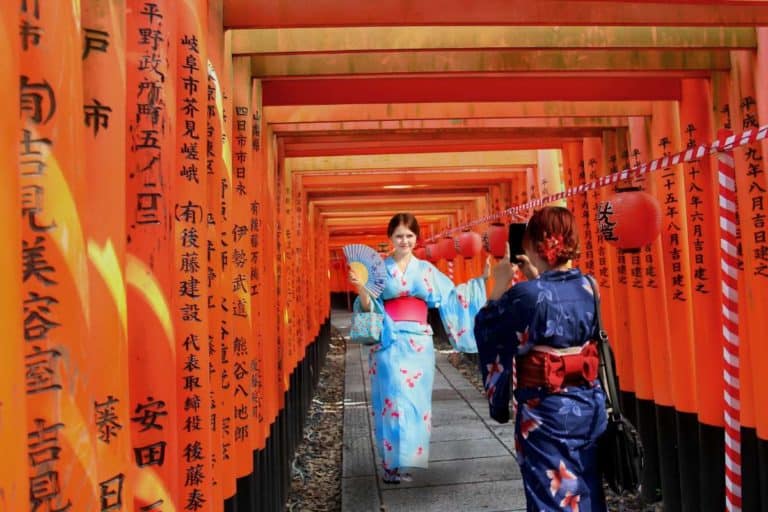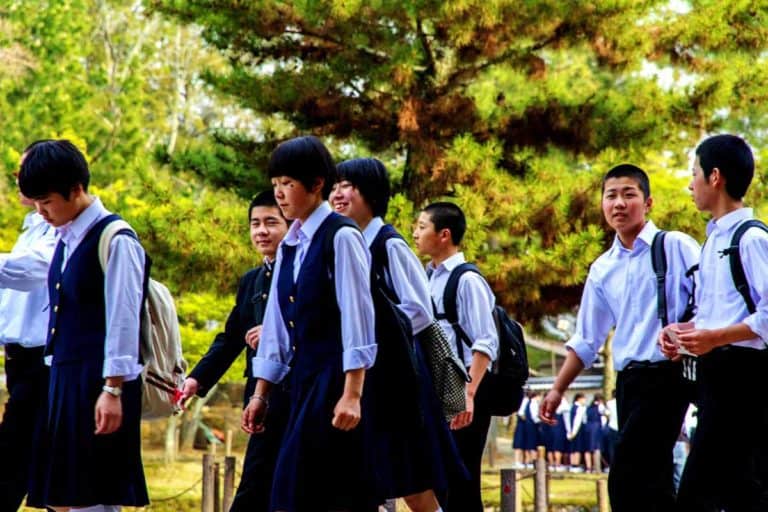What Should I Know About Japanese Culture?
Are you curious about Japanese culture? Well, buckle up because we’ve got all the juicy details you need to know.
From the intricate rules of politeness and etiquette to the art of bowing customs, we’re diving headfirst into the fascinating world of Japanese customs.
And that’s not all – we’ll uncover the secrets of table manners, bathhouse etiquette, and gift-giving customs.
So get ready to broaden your horizons and immerse yourself in Japanese culture’s rich and nuanced tapestry.
Let’s go!
Key Takeaways
- In daily interactions, saying ‘please’ and ‘thank you’ is essential in Japanese culture.
- Bowing is a common form of greeting and showing respect.
- Understanding and respecting bowing customs is crucial for maintaining positive relationships.
- Neatly arranging chopsticks and dishes demonstrates respect.
Politeness and Etiquette
We should practice proper etiquette in our daily interactions by saying ‘please’ and ‘thank you.’ Politeness and etiquette are highly valued in Japanese culture and play a significant role in social interactions. Understanding and respecting these cultural norms is essential when interacting with Japanese people.
In Japan, bowing is a common form of greeting and showing respect. The depth and duration of the bow can vary depending on the situation and the relationship between individuals.
Additionally, removing your shoes before entering someone’s home or certain establishments, such as temples or traditional restaurants, is customary.
By observing these practices, we show our respect for Japanese culture and foster positive relationships with the people we interact with.
Bowing Customs
As we learn about Japanese culture, it’s important to understand the significance of bowing customs and how they vary depending on the situation and relationship between individuals.
Bowing is a traditional greeting, showing respect and expressing gratitude in Japan. The depth and duration of the bow can convey different meanings.
A casual bow is a slight nod of the head, while a deeper bow indicates a higher level of respect. The duration of the bow can also vary, with longer bows being more formal and respectful.
Furthermore, the distance between individuals when bowing is essential. In formal situations, a greater distance is maintained, whereas the distance may be shorter in more intimate settings.
Understanding and respecting these bowing customs is crucial for maintaining positive relationships and showing appreciation for Japanese culture.
Table Manners
Regarding table manners in Japan, there are a few essential points to remember.
- Chopstick etiquette is crucial. It’s rude to pass food from one set of chopsticks to another or stick them upright in a rice bowl.
- Slurping is acceptable and even encouraged while eating noodles, showing you enjoy your meal.
These small details can make a big difference in showing respect and understanding Japanese culture.
Chopstick Etiquette
I think it’s important never to stick chopsticks straight up in a rice bowl. This is a cultural norm in Japan, and it’s considered disrespectful.
When dining in Japan, it’s essential to understand the proper etiquette surrounding chopsticks. Firstly, holding chopsticks towards the non-pointed end is customary, not in the middle or towards the tip.
It’s also important to avoid passing food from one pair of chopsticks to another, as this is associated with funeral rituals. Additionally, using chopsticks to point at people or food is considered impolite.
Lastly, when finishing a meal, placing your chopsticks neatly on the chopstick rest or the side of the plate is customary. By respecting these chopstick etiquette guidelines, we can demonstrate our appreciation for Japanese culture and foster positive cultural exchanges.
Slurping Is Acceptable
All of us can agree that slurping is acceptable in Japanese culture, as it shows enjoyment of the food and is considered a sign of appreciation.
This unique aspect of Japanese dining etiquette may seem unusual to outsiders, but it holds a deeper meaning in their culture.
Here are a few key points to understand about slurping in Japan:
- Slurping noodles: In Japan, it’s common and even encouraged to slurp noodles, such as ramen or udon. This enhances the flavor and allows the noodles to cool down before reaching the mouth.
- Expressing appreciation: Slurping is seen as a way to express gratitude towards the chef and to show that the food is delicious. It’s a form of non-verbal communication that conveys satisfaction and enjoyment.
- Cultural significance: Slurping is deeply rooted in Japanese tradition and is considered a mark of respect for the food and the effort that went into preparing it. It’s a way to immerse oneself in the dining experience fully.
- Social acceptance: Unlike in many Western cultures, slurping is widely accepted and even expected in Japan. It’s seen as a natural part of the dining process and isn’t considered impolite.
Bathhouse Etiquette
When visiting a bathhouse in Japan, it’s essential to understand the etiquette that surrounds this traditional practice.
Nudity and privacy are highly respected, so removing all clothing before entering the bathing area is customary.
Proper bathing techniques should be observed, such as thoroughly washing oneself before entering the shared baths.
Lastly, showing respect for others is crucial by keeping noise to a minimum and refraining from staring or pointing.
Nudity and Privacy
When visiting a Japanese bathhouse, we should be aware of the cultural norms and expectations surrounding nudity and privacy. In Japan, bathhouses, known as ‘onsen’ or ‘sento,’ are an integral part of the culture and offer a unique bathing experience.
To ensure a respectful and comfortable visit, it’s important to understand the following:
- Nude bathing: In most Japanese bathhouses, nudity is required. It’s customary to enter the bathhouse and disrobe entirely before entering the communal bathing area.
- Gender separation: Japanese bathhouses have separate areas for men and women. Make sure to enter the correct section to avoid any confusion.
- Cleanliness: Before entering the bath, it’s essential to wash thoroughly at the shower area provided. This ensures hygiene and cleanliness.
- Respect for privacy: While bathing in a communal area, it’s important to respect the privacy of others. Avoid staring or making others uncomfortable.
Proper Bathing Techniques
Remember to practice proper bathing techniques to ensure a respectful and enjoyable experience at the bathhouse.
Bathing in Japan isn’t just about getting clean; it’s a cultural tradition that promotes relaxation and socializing.
When entering the bathhouse, it’s important to remove your shoes and store them in the designated area.
Once inside, you’ll find separate gender-segregated bathing areas, usually marked with curtains or signs.
Before entering the bathing area, rinse your body thoroughly at one of the shower stations.
Once you’re clean, you can then enter the communal bath.
Remember to be mindful of others and avoid splashing or making excessive noise.
Additionally, covering your private parts with a small towel is customary when moving from one area to another.
Respect for Others
To maintain a respectful atmosphere at the bathhouse, we must be mindful of others and follow proper bathing etiquette. Here are some key points to consider:
- Privacy: Respect the personal space and privacy of others by not staring or intruding on their bathing area.
- Quietness: Keep noise levels to a minimum to ensure a peaceful environment for everyone.
- Cleanliness: Take a quick shower before entering the bath to keep the water clean and free from dirt or soap residue.
- Sharing: Be considerate of others by not monopolizing the facilities. Limit your time in the bath to allow others to enjoy their turn.
Removing Shoes Indoors
Our host’s preference is that we remove our shoes indoors to maintain cleanliness and respect Japanese customs.
In Japanese culture, wearing shoes inside someone’s home or other indoor spaces is considered impolite.
This practice is rooted in cleanliness and maintaining a harmonious environment. By removing our shoes, we prevent dirt and germs from being tracked indoors, thus promoting cleanliness.
It also shows respect for the space and the efforts to keep it clean. To help you understand the significance of this custom, here is a table illustrating the differences between outdoor and indoor footwear:
| Outdoor Footwear | Indoor Footwear |
|---|---|
| Shoes | Slippers |
| Sandals | Barefoot |
| Boots | Socks |
| Sneakers | Indoor shoes |
| Flip-flops | Tabi socks |
Gift Giving Etiquette
What are some joint gift-giving customs in different cultures, and how can we navigate them appropriately?
Gift-giving customs vary significantly across cultures, and it’s essential to understand and respect these customs to avoid any unintended offense.
Here are four key considerations to keep in mind when navigating gift-giving in different cultures:
- Research: Take the time to learn about the specific gift-giving customs of the culture you’re interacting with. This will help you choose appropriate gifts and avoid any cultural faux pas.
- Symbolism: Be mindful of the symbolism of certain gifts in different cultures. For example, in some cultures, white flowers are associated with funerals and may be seen as inappropriate gifts for celebratory occasions.
- Presentation: Pay attention to the way gifts are presented. In some cultures, it’s customary to offer gifts with both hands or to refuse a gift initially before accepting it.
- Reciprocity: Understand that gift-giving in some cultures is seen as an exchange, and it’s expected to reciprocate with a gift of similar value. Consider this when giving and receiving gifts.
Frequently Asked Questions
Do Japanese People Expect Foreigners to Adhere to All Aspects of Japanese Etiquette and Customs?
Japanese people generally appreciate foreigners trying to understand and respect their customs. While not all aspects of etiquette may be expected, showing cultural sensitivity goes a long way in fostering positive interactions.
Is It Considered Rude to Refuse a Gift in Japanese Culture?
In Japanese culture, it is generally considered rude to refuse a gift. Accepting it graciously is seen as a sign of respect and appreciation. However, exceptions or cultural nuances may vary from person to person.
How Important Is the Concept of “Saving Face” in Japanese Culture?
Avoiding embarrassment is crucial in Japanese culture. To save face, we should prioritize harmony and avoid public confrontation. Maintaining politeness and indirect communication can help prevent causing shame or discomfort to others.
Are There Any Specific Rules or Customs Regarding Using Chopsticks in Japanese Dining?
When using chopsticks in Japanese dining, it is essential to observe certain customs. For example, passing food from one set of chopsticks to another is considered impolite, as this resembles a funeral ritual.
Are Tattoos Generally Frowned Upon in Japanese Society, and Is It Acceptable to Visit a Bathhouse if You Have Tattoos?
Tattoos are generally frowned upon in Japanese society, but acceptance is growing. Bathhouses may have strict policies against tattoos due to their historical association with organized crime.
Conclusion
In conclusion, diving into the depths of Japanese culture is like uncovering a hidden treasure trove of customs and traditions.
From the graceful art of bowing to the intricate rules of table manners, every aspect of daily life is steeped in politeness and respect.
Removing shoes indoors and the art of gift-giving further showcase the importance of etiquette in Japanese society.
Exploring these cultural nuances allows us to appreciate the beauty and richness of Japan’s unique heritage.






